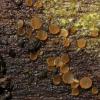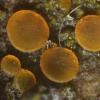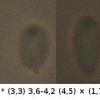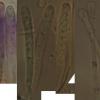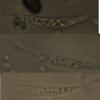
03-09-2025 21:59
Philippe PELLICIERLa Léchère, Col de la Madeleine, alt 1970m, au s

07-09-2025 11:34
 Zuzana Sochorová (Egertová)
Zuzana Sochorová (Egertová)
Hello,I have identified this fungus as Hymenoscyph

02-09-2025 11:34
Thomas Læssøehttps://svampe.databasen.org/observations/10527903

05-09-2025 09:32
 Nicolas VAN VOOREN
Nicolas VAN VOOREN
Bonjour, hi everyone,Do you know where the fungari

05-09-2025 18:53
 Robin Isaksson
Robin Isaksson
Hi! Spores 1 septate; 12-13 x 3um Hairs 35-75

04-09-2025 20:11
Åge OterhalsSaccobolus on dear droppings. Can any of you confi

03-09-2025 12:44
Hi to somebody.I would like to know your opinion o
Orbilia tremulae?
Viktorie Halasu,
10-04-2020 20:15
 Hello,
Hello,I've found this Orbilia on wet decorticated wood (probably Salix), on the ground.
Only a little refractive exudate on paraphyses top + scattered on cells near margin.
Uppermost spore mostly with SB up, but not always (3rd ascus from left is with SB down).
I'm not sure if the anamorph belongs to it.
Given the habitat and spore size, could it be Orbilia tremulae? Isn't it too much orange?
Thank you in advance.
Viktorie
Hans-Otto Baral,
10-04-2020 21:55

Re : Orbilia tremulae?
Hi Viktorie
Could be, but sure we cannot be. These fusiform spores might be ascospores?
The Dicranidion conidia of O. tremulae would be characteristic.
O. tremulae is probably a common species, but I am often not sure, and our concept is only tentative. With DNA it would be easy - or with a culture or conidia from near apothecia.
Zotto
Lothar Krieglsteiner,
11-04-2020 09:54

Re : Orbilia tremulae?
... das hätte ich (früher) als coccinella bestimmt. Aber vermutlich ist dies eine Sammelart geworden, wie so vieles.
LG von Lothar
LG von Lothar
Hans-Otto Baral,
11-04-2020 10:03

Re : Orbilia tremulae?
Ja, das ist kompliziert geworden. O. coccinella ha hörnchenförmige Sporen in 16-sporigen Asci. O. tremulae hat eigentlich als NFF das japanische Dicranidion inaequale, aber das passt nur morphologisch. Neben der häufigen O. eucalypti gibt es noch ein paar weitere mit ellipsoiden bis subglobosen Sporen.

